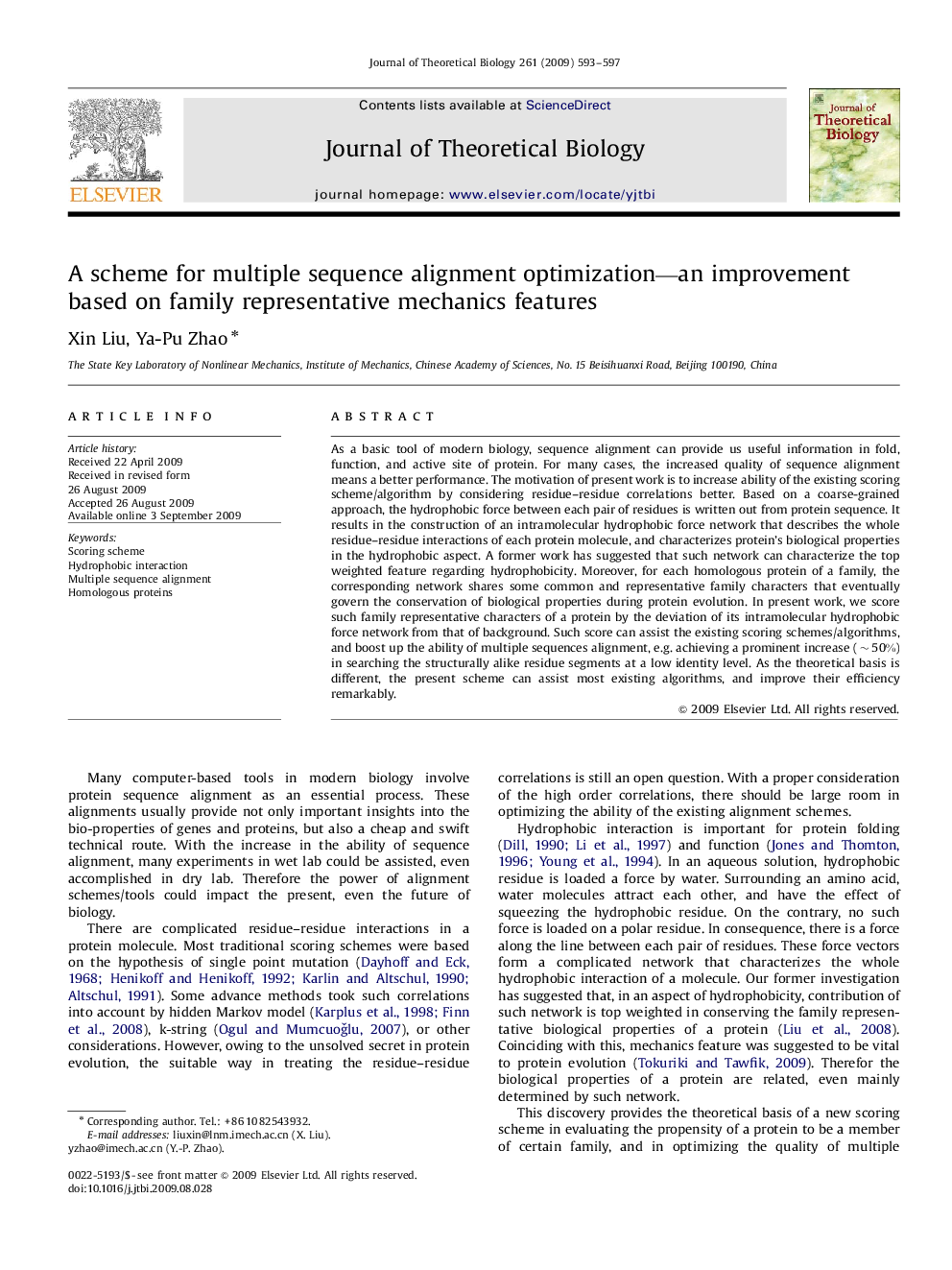| Article ID | Journal | Published Year | Pages | File Type |
|---|---|---|---|---|
| 4497806 | Journal of Theoretical Biology | 2009 | 5 Pages |
As a basic tool of modern biology, sequence alignment can provide us useful information in fold, function, and active site of protein. For many cases, the increased quality of sequence alignment means a better performance. The motivation of present work is to increase ability of the existing scoring scheme/algorithm by considering residue–residue correlations better. Based on a coarse-grained approach, the hydrophobic force between each pair of residues is written out from protein sequence. It results in the construction of an intramolecular hydrophobic force network that describes the whole residue–residue interactions of each protein molecule, and characterizes protein's biological properties in the hydrophobic aspect. A former work has suggested that such network can characterize the top weighted feature regarding hydrophobicity. Moreover, for each homologous protein of a family, the corresponding network shares some common and representative family characters that eventually govern the conservation of biological properties during protein evolution. In present work, we score such family representative characters of a protein by the deviation of its intramolecular hydrophobic force network from that of background. Such score can assist the existing scoring schemes/algorithms, and boost up the ability of multiple sequences alignment, e.g. achieving a prominent increase (∼50%∼50%) in searching the structurally alike residue segments at a low identity level. As the theoretical basis is different, the present scheme can assist most existing algorithms, and improve their efficiency remarkably.
